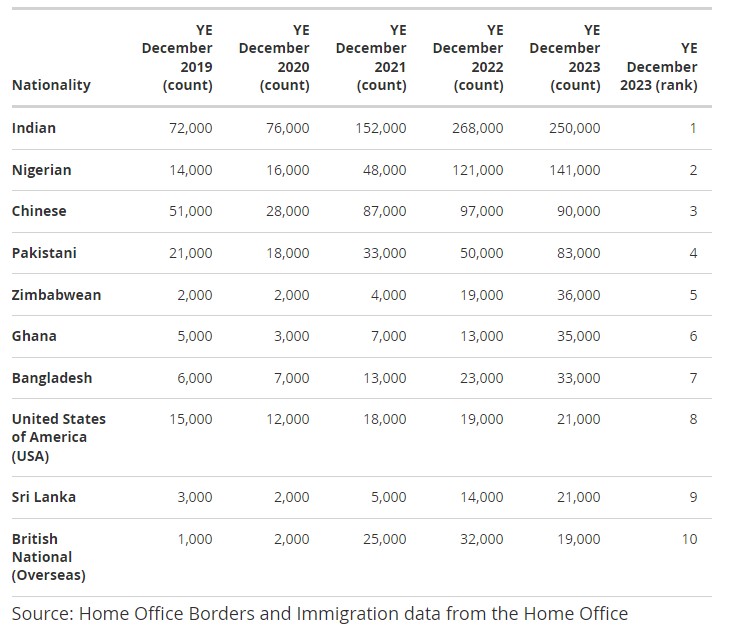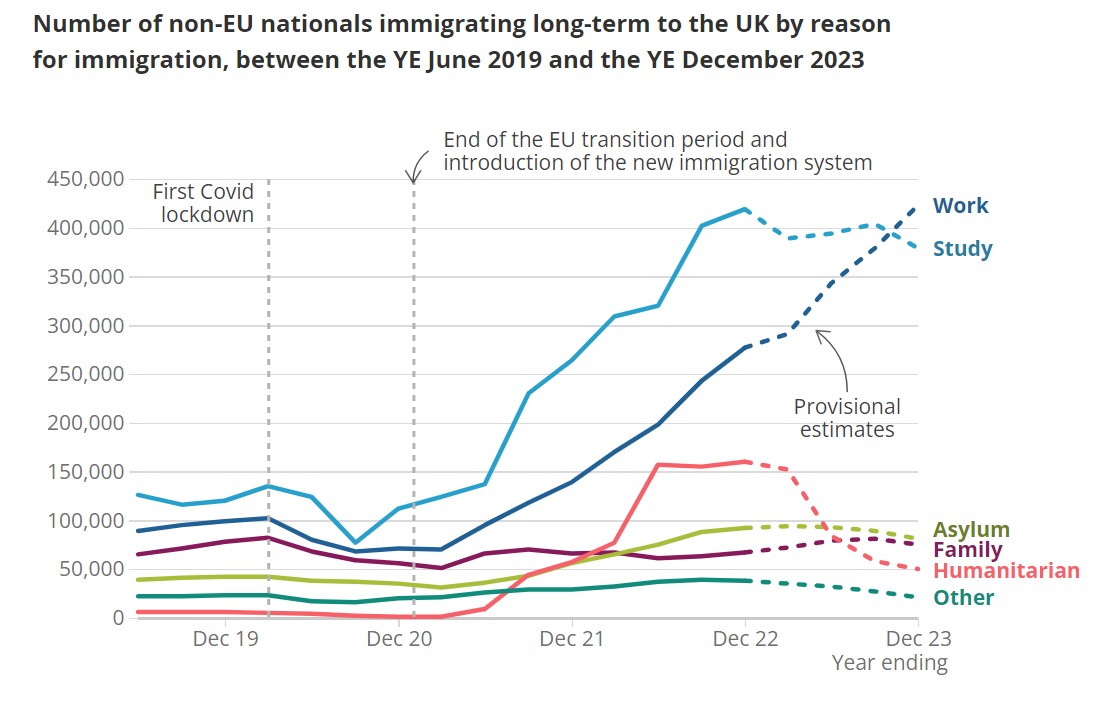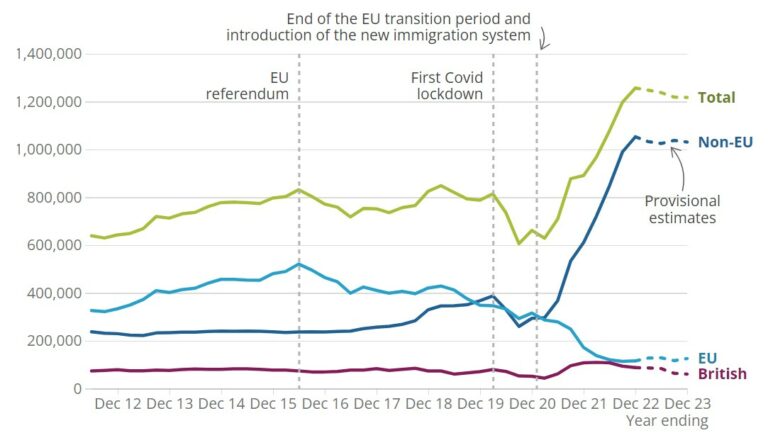A total of 1.2 million long-term immigrants arrived in the UK in 2023, with those from non-EU countries making up 85%.
Provisional net migration was estimated at 685,000, as 532,000 people left the country over the same period, the Office for National Statistics said on Thursday.
The top five non-EU nationalities for long-term immigration flows were Indian (250,000), Nigerian (141,000), Chinese (90,000), Pakistani (83,000) and Zimbabwean (36,000).
“Since 2019, the number of Indian, Nigerian and Pakistani nationals arriving in the UK has seen the largest increase,” the ONS said.
“There were approximately 62,000 more Pakistani nationals, 127,000 more Nigerian nationals and 178,000 more Indian nationals immigrating to the UK in 2023 compared with 2019.”

The estimated number of EU nationals was estimated at 126,000, making up 10% of the total, with 88,000 British nationals making up the remaining 5%.
The statistics also showed that most long-term non-EU immigrations arrived on work-related visas, overtaking those on study-related visas for the first time since 2019.
“Alongside this growth in non-EU work-related immigration comes a shift in the balance between work main applicants and dependants. In the year ending December 2022, main applicants accounted for an estimated 55% of non-EU long-term work immigration whereas dependants made up 45%,” the ONS said.
“In the year ending December 2023, main applicants accounted for 48% of non-EU work immigration (204,000). Around 9 in 10 (93%) of those arriving on main applicant work visas in the year ending December 2023 were aged 18 to 44 years and were mainly female (57%).
“Comparatively, non-EU nationals arriving as dependants of those on work visas made up just over half (52%) of non-EU work-related immigration in the YE December 2023 (219,000).
“Preliminary analysis indicates that those most likely to bring dependants come from Nigeria, Sri Lanka, India, Pakistan, Zimbabwe and Ghana. Dependants are a mixture of adults and children; of the top ten countries, around 50% of dependants were aged 17 years or under.”

Until 2019 most long-term immigrants were EU nationals, but the introduction of a new immigration system ending free movment for EU nationals has resulted in a drop in migration from EU countries and a massive in arrivals from non-EU countries.
“The ending of free movement of those from the European Union coupled with the introduction of a new immigration system in January 2021, easing of restrictions after the coronavirus (COVID-19) pandemic, and external events such as the war in Ukraine have all had an impact,” the ONS said.
Of the estimated 532,000 emigrating from the UK, 233,000 were non-EU nationals, 202,000 were from EU countries, and 98,000 were British.
A recent report from think tank the Centre for Policy Studies (CPS) found that record-high immigration has failed to boost the British economy while exacerbating the housing crisis and placing increasing pressure on public service.
The report also highlighted the dramatic increase in the non-White British population, the extremely uneven geographic distribution of recently arrived immigrants, the vast difference in contributions made by migrants from different regions, and two decades of broken promises by Conservative and Labour governments alike.






















